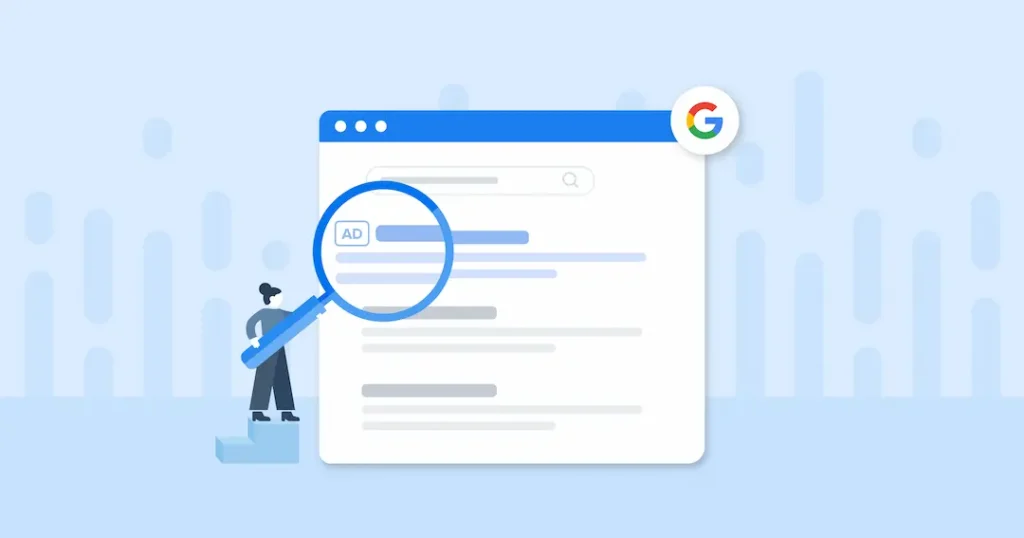Table of Contents
Let’s be honest—writing ads for PPC isn’t as easy as it looks.
You open your Google Ads dashboard, type out a headline or two, add a CTA like “Learn More” or “Buy Now,” hit publish… and then? Crickets.
You’re not alone. PPC ad copywriting trips up even experienced marketers. The space is tight. The audience is impatient. And let’s face it—no one’s looking for ads unless you give them a reason to care.
But here’s the good news: with the right approach, your ad copy can stand out. In this blog, we’re going to break down exactly how to write PPC ads that stop the scroll, earn the click, and bring real results. No fluff. Just practical advice that works.
Wait—What Is PPC Ad Copywriting Again?
In simple terms, PPC ad copywriting is writing those short little ads you see on Google, Facebook, Instagram, LinkedIn, and other platforms.
But here’s the catch:
You only get a few lines to convince someone to click. That’s it. No second chances.
So every word matters. Your copy needs to speak to the user’s exact problem or need, spark curiosity, and offer a clear next step—all in under 300 characters.
Why It Matters (More Than You Think)
Strong ad copy is the difference between a winning campaign and wasted budget. You can have the best targeting in the world, but if your ad doesn’t get clicked, your money is going down the drain.
Here’s what great PPC ad copywriting can do:
- Get more clicks (without raising your budget)
- Lower your cost-per-click
- Improve your ad relevance and quality score
- Drive better conversions on your landing page
Sounds like a win-win, right? Let’s talk about how to get there.
11 Real Tips to Write PPC Ads That Work
These aren’t theories. These are tips from running real campaigns for real businesses—big and small. Try them, tweak them, and watch your results improve.
1. Speak to What They’re Searching For
Don’t just throw in fancy words. Think about what the user is typing into that search bar—or what problem they’re scrolling through Instagram with.
If someone searches “affordable graphic design,” don’t write:
“World-Class Creative Services”
Instead, try:
“Affordable Graphic Design Starting at ₹499 – Fast Turnaround”
See the difference? Great PPC ad copywriting mirrors user intent.
2. Use Words That Spark Emotion
People click based on emotion first—logic second. Use words like “free,” “limited,” “proven,” “secret,” or “instant” to create urgency or curiosity.
Example:
“Instant Access to Our Free PPC Checklist – No Signup Needed”
Emotion sells. Even in a 90-character headline.
3. Focus on the Benefit, Not the Feature
Nobody really cares that your software has 87 integrations. They care about saving time or getting better results.
Instead of:
“CRM with Advanced Features”
Try:
“Close Deals Faster with a CRM That Works for You”
This simple shift can change your click-through rate overnight.
4. Use Real Numbers and Specifics
Saying “get more leads” isn’t enough—it’s way too vague. Use specifics.
Example:
“Cut Ad Costs by 32% with Our PPC Strategy – See How”
Numbers build trust. They stand out in a sea of fluffy ads.
5. Write Like You’re Talking to a Friend
Drop the formal tone. You’re not writing a college essay.
Talk like a real person:
“Sick of wasting money on ads that don’t work? We get it.”
That’s the kind of PPC ad copywriting people respond to—because it feels human.
6. Include the Keyword (But Don’t Overdo It)
Yes, using the keyword helps with relevance, but don’t stuff it in just for SEO.
If your keyword is “Facebook ads management,” a good headline could be:
“Expert Facebook Ads Management – Try Us Free”
It flows naturally, and that’s what matters most.
7. Have a Call to Action That Makes Sense
“Learn More” is fine. But sometimes it’s too vague.
Try:
- “Start Your Free Trial”
- “Download the Free Guide”
- “Book a 15-Min Demo”
- “Get Custom Pricing Now”
The clearer your CTA, the easier it is for someone to say yes.
8. Create a Little Urgency (But Keep It Real)
Fake urgency doesn’t work. But if you actually have a deadline or limited spots, say it.
Example:
“Only 5 Seats Left for Our Live PPC Workshop – Reserve Yours Now”
Fear of missing out (FOMO) is a real thing—and it works.
9. Handle Doubts Before They Even Think of Them
People have objections: Is this worth it? Is it complicated? Will I get stuck?
Tackle those head-on:
“No Setup Fees. Cancel Anytime. 100% Risk-Free”
This builds trust fast—and trust leads to clicks.
10. Test, Test, Test
No one nails it on the first try. Always test different headlines, CTAs, and messaging angles.
You might be surprised which one performs best. That’s the beauty of PPC ad copywriting—it blends creativity with strategy.
11. Keep Your Ad and Landing Page in Sync
If your ad promises “50% Off Today,” your landing page better back it up.
Nothing kills trust faster than a disconnect between what you promised and what they see.
Always deliver on what your ad copy promises.
Quick Mistakes to Avoid
Let’s wrap up with a few no-no’s that’ll tank your ads faster than a bad headline:
- Writing generic copy like “Best services in town”
- Forgetting to include a CTA
- Ignoring mobile formatting (over 60% of clicks are on phones!)
- Overusing keywords to the point of nonsense
- Making claims you can’t back up
Avoid these, and you’re already ahead of 80% of advertisers.
Final Thoughts
At the end of the day, PPC ad copywriting isn’t about being clever. It’s about being clear, relevant, and helpful.
You’re not just writing ads—you’re solving problems. One line at a time.
So before you launch your next campaign, don’t just ask, “Does this sound good?” Ask yourself,
“Would I click on this if I were in their shoes?”
If the answer is yes, you’re on the right track.
Related Blog- https://ineffablebusiness.com/ppc-metrics-guide-2025/

